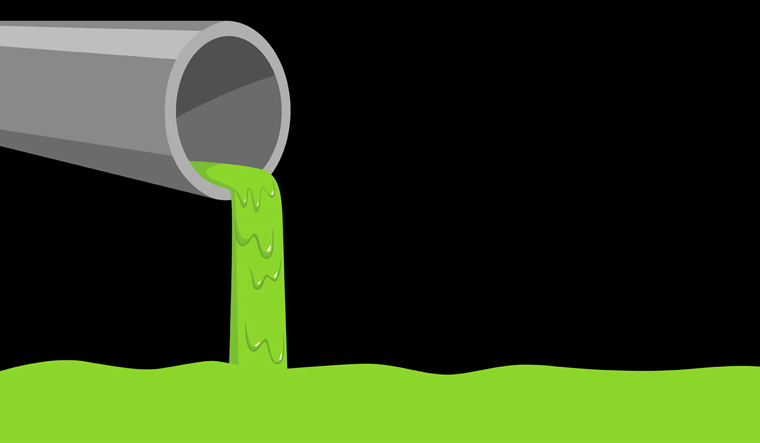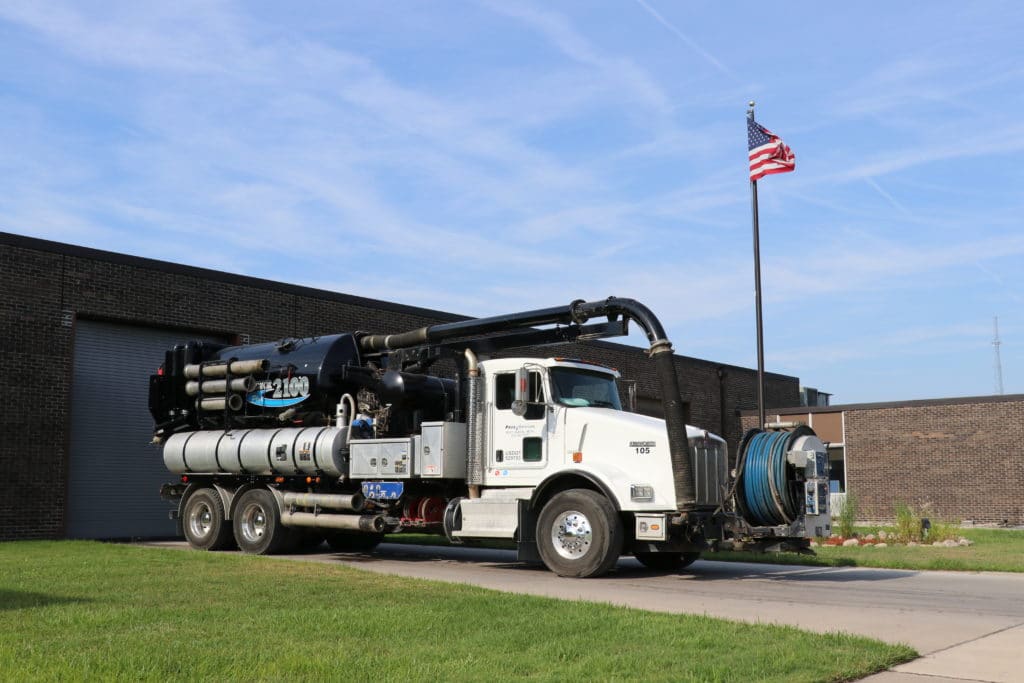Industrial Wastewater Treatment: Advanced Methods for Effective Management
Industrial Wastewater Treatment: Advanced Methods for Effective Management
Blog Article
How Fluid Waste Disposal Functions: An In-depth Summary of Techniques and Technologies Employed

Introduction of Liquid Waste Types
The complexity of liquid waste types requires a thorough understanding of their qualities and implications for disposal. Liquid waste can generally be categorized right into numerous kinds, including commercial, municipal, farming, and contaminated materials. Each group shows unique residential or commercial properties, requiring specific management approaches to minimize ecological and wellness dangers.
Industrial liquid waste originates from making procedures and frequently consists of a variety of contaminants, such as hefty metals, solvents, and organic substances. Metropolitan liquid waste, primarily consisting of wastewater from families and business establishments, includes raw material, nutrients, and pathogens (industrial wastewater treatment). Agricultural fluid waste, including drainage from ranches, may contain plant foods, pesticides, and pet waste, presenting risks to water top quality and ecological communities
Harmful liquid waste is identified by its poisoning, reactivity, or prospective to cause damage. This classification consists of compounds like acids, bases, and particular chemicals that require rigorous handling and disposal procedures. Comprehending these varied liquid waste kinds is important for developing effective disposal techniques and ensuring conformity with ecological policies. Correct category and characterization are essential for carrying out appropriate treatment strategies and minimizing the adverse influence on public health and the environment.
Physical Therapy Methods

Screening is the initial step, where larger particles and debris are gotten rid of from the fluid waste making use of displays or grates. This procedure secures downstream devices from damage and guarantees smoother procedure. Complying with testing, sedimentation uses gravitational force to different solids from fluids. In sedimentation tanks, larger fragments clear up at the base, creating a sludge layer, while the clarified fluid can be more dealt with.
Filtering is another essential approach that includes passing the liquid via permeable materials, such as sand or membrane layers, to catch smaller particles. This action enhances the top quality of the liquid, making it ideal for succeeding treatment procedures.

Chemical Treatment Strategies
Chemical treatment methods are important for effectively handling liquid waste, specifically in dealing with liquified and colloidal impurities that physical approaches may not properly get rid of. These techniques use numerous chemical agents to counteract, precipitate, or change hazardous substances right into less damaging forms.
One typical approach is coagulation and flocculation, where chemicals such as alum or ferric chloride are contributed to advertise the gathering of put on hold particles. This process boosts sedimentation, enabling much easier elimination of the resulting sludge. Furthermore, oxidation procedures, employing agents like chlorine or ozone, are utilized to damage down intricate natural substances and microorganisms, making the waste more visit homepage secure for discharge or additional therapy.
Neutralization is an additional vital technique, which changes the pH of acidic or alkaline waste streams to neutral degrees, avoiding prospective injury to downstream systems and the setting. Moreover, progressed oxidation procedures (AOPs) make use of mixes of oxidants and ultraviolet light to degrade consistent contaminants, achieving a higher degree of therapy effectiveness.
Biological Treatment Processes
Organic therapy processes play a vital function in the monitoring of liquid waste by using microbes to decay raw material and lower contaminant degrees. These procedures can be broadly categorized right into anaerobic and cardiovascular treatments, each utilizing certain microbial neighborhoods to achieve reliable waste destruction.
Aerobic treatment involves making use of oxygen to facilitate the failure of organic products by bacteria. This procedure is commonly implemented in turned on sludge systems, where aeration containers give a conducive atmosphere for microbial growth, bring about the oxidation of natural toxins. The resultant biomass can be divided from dealt with effluent through sedimentation.
In comparison, anaerobic treatment happens in the lack of oxygen, relying on different germs to break down raw material. This method is specifically beneficial for high-strength waste, as it generates biogas, a renewable resource resource, visit here while lowering sludge production. Technologies such as anaerobic digesters are regularly utilized in local and industrial applications.
Both cardio and anaerobic organic treatments not just decrease the environmental effect of fluid waste but likewise promote source healing, making them vital parts of lasting waste management techniques. Their efficiency, flexibility, and performance support their widespread implementation across numerous markets.
Arising Technologies in Disposal
Cutting-edge approaches to fluid garbage disposal are rapidly developing, driven by developments in innovation and an enhancing emphasis on sustainability. Among these arising technologies, membrane layer bioreactors (MBRs) have actually obtained traction for their ability to combine organic therapy with membrane layer filtration, resulting in high-grade effluent that can be reused in different applications. MBRs allow smaller impacts and much more reliable operations contrasted to traditional systems.
One more appealing advancement is the usage of anaerobic digestion incorporated with nutrient recuperation modern technologies, which not just deals with fluid waste yet additionally produces biogas and recuperates useful nutrients like nitrogen and phosphorus. This twin benefit improves source efficiency and decreases ecological impact.
Furthermore, Website progressed oxidation processes (AOPs) are being adopted for the destruction of complex organic pollutants. These techniques make use of powerful oxidants and drivers to break down impurities at the molecular degree, offering a very efficient service for difficult waste streams.
Additionally, the assimilation of synthetic knowledge and artificial intelligence in waste monitoring systems is enhancing operational efficiency and anticipating maintenance, bring about lowered expenses and improved environmental conformity. These innovations reflect a considerable shift towards even more lasting and effective liquid garbage disposal practices.
Verdict
To conclude, effective liquid waste disposal demands a thorough understanding of various strategies and modern technologies. The assimilation of physical, chemical, and biological therapy methods makes certain the effective monitoring of varied waste types. Moreover, the emergence of innovative innovations improves therapy efficacy and advertises sustainability in waste management techniques. By continuously advancing these methods, it becomes possible to attend to the growing difficulties connected with fluid waste, inevitably adding to ecological defense and source recuperation.
Liquid waste disposal is a vital element of environmental monitoring, needing a thorough understanding of numerous methods and innovations customized to different waste types. Liquid waste can generally be categorized into numerous types, including commercial, metropolitan, farming, and dangerous waste. Agricultural fluid waste, including overflow from farms, may contain fertilizers, pesticides, and animal waste, positioning threats to water high quality and environments.
Different physical therapy approaches play an essential role in taking care of liquid waste properly - industrial wastewater treatment.In verdict, effective liquid waste disposal necessitates a detailed understanding of various techniques and modern technologies
Report this page